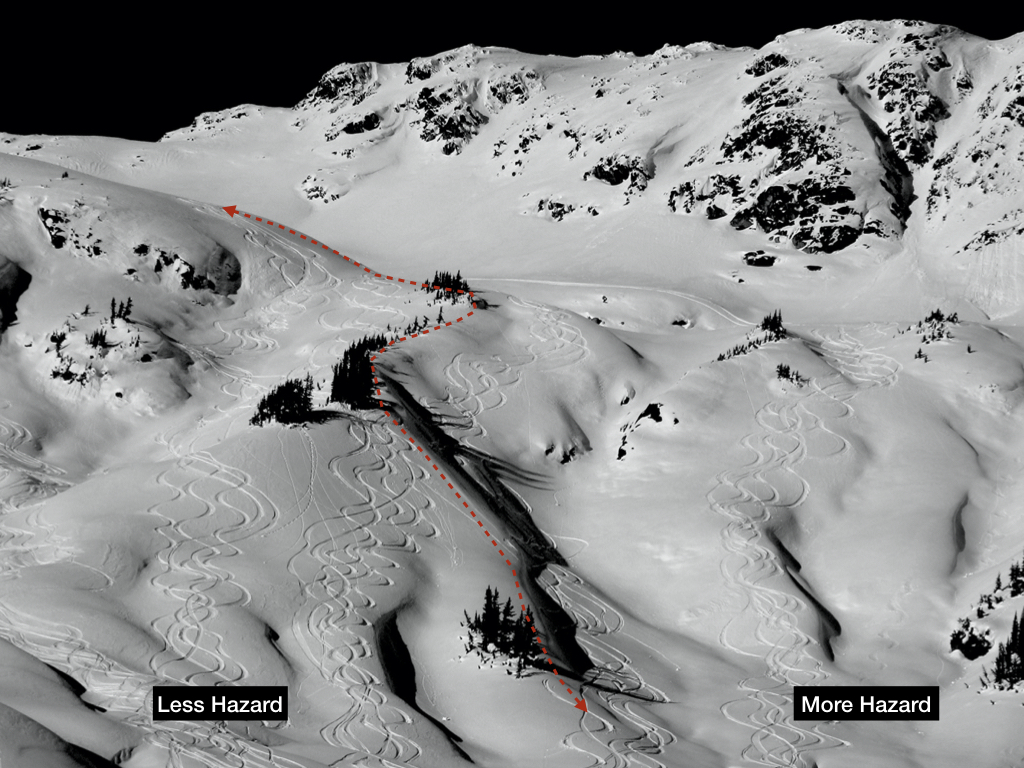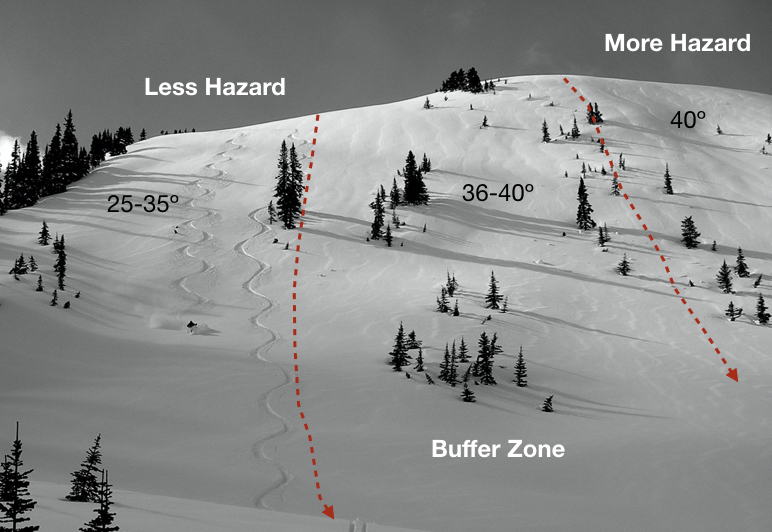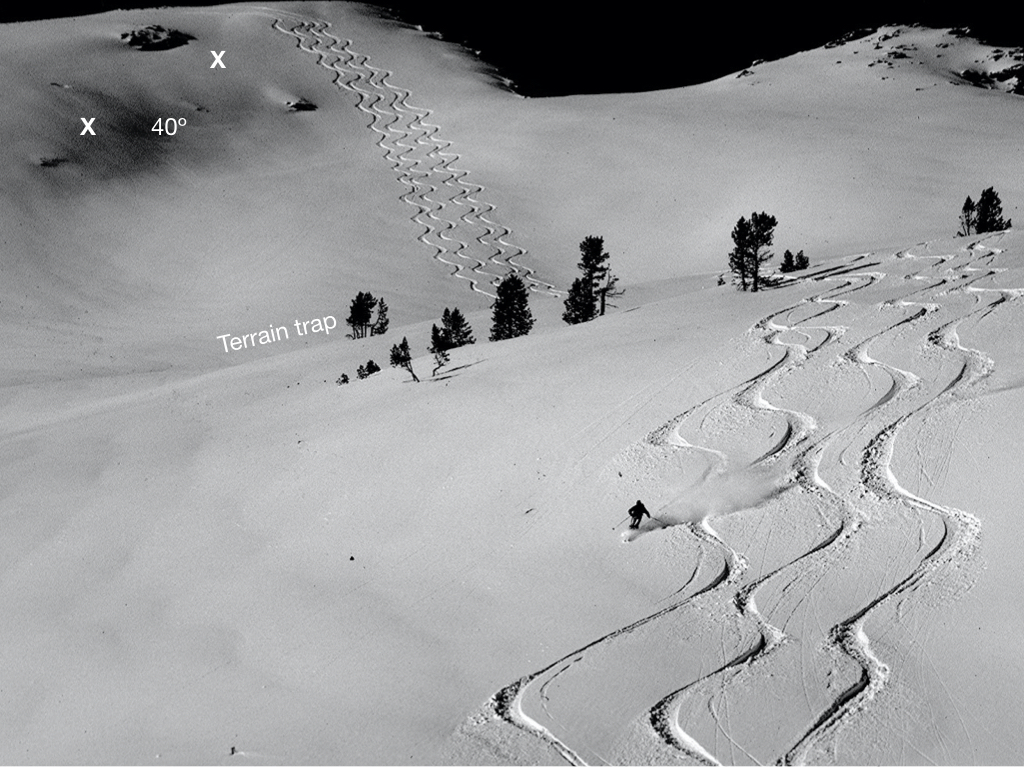Terrain Tip No. 1: Apply a Margin of Safety
In the Terrain Tips introduction we quoted the old guide adage, “When unstable snow is the problem, terrain is the solution.” And we talked about what it looks like to use terrain to reduce the risk of getting caught in an avalanche.
In Terrain Tips No. 1, we discuss applying a margin of safety, or a buffer zone, between our proposed ski line and more hazardous terrain to allow a margin for error.





